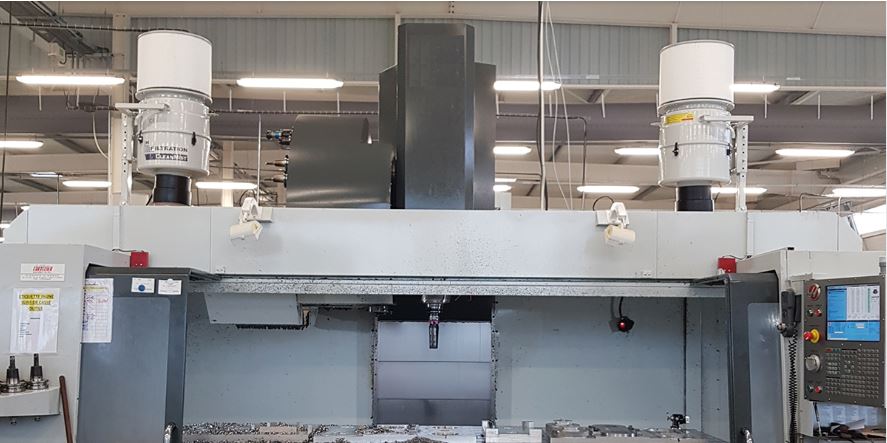
What is a centrifugal filter used for and what are its fields of application?
Centrifugal filters are designed to purify and break down the oily mists produced by industrial plants, precisely separating the air from the oil (or coolants), collecting the latter to re-enter it in the production cycle or to dispose of it.
The mists pass through the inlet of the filter passing a net positioned to avoid access to solid materials, and are then conveyed inside the plant itself. Here, through a conical diffuser , the particles are evenly distributed inside the filter and centrifuged at high speed to be pushed towards the external filter panels. Crossing them, the particles turn into droplets due to the coalescence effect , drained and conveyed to an exhaust pipe to be collected.
The purified air is then pushed into the upper part of the filter, where it will then be reintroduced into circulation after any treatment through a final cartridge or an electrostatic filter.
Application of centrifugal filters
- Centrifugal filters that exploit the coalescence principle for the recovery of the oils present in oil mists can be
- applied for the suction of:
- Machine tools
- Lathes
- Metal washing machines
- Drilling
- Milling
- Boring machines
- Machining centers.
The success of this type of centrifugal filter lies in the ease of installation , in the high efficiency guaranteed, in the low noise level , in the reduced maintenance and in the low consumption necessary for its operation. Furthermore, thanks to the coalescence principle, the oily particles dispersed in the atmosphere will be recovered, collected and, consequently, reintroduced into the production cycle of the plant.
